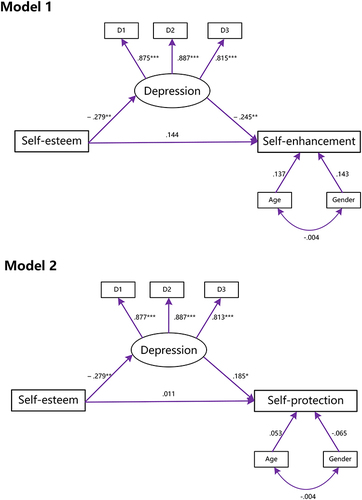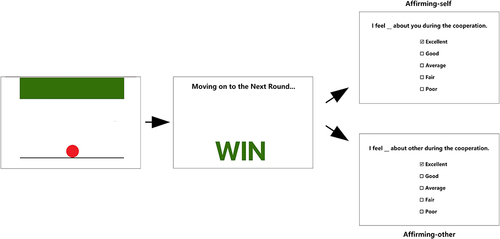Figures & data
Figure 1 The timeline of one trial in the self-serving bias task. Each stimulus included a description of positive or negative interpersonal event, a question and a 4-point scale. Participants were required to attribute the cause of an event to himself or herself from 1= “Very unlikely” to 4= “Very likely” in 6-s.

Table 1 Means, Standard Deviation (SD) and Correlations of the Primary Variables
Table 2 Standardized Total, Direct and Indirect Effects of Model 1 and Model 2
Figure 2 Path analyses depicting self-esteem to self-enhancement (Model 1) and to self-protection (Model 2) via depression. Standard parameter estimates are presented.

Figure 4 Behavioral results of Study 2. The IGD participants rated lower in the negative condition after affirming-self manipulation as compared with affirming-other manipulation, but there was no significant difference in positive condition (error bars represent standard error of the mean, **p < 0.01).

Data Sharing Statement
The data will be available from the first author Yifan Wang ([email protected]) upon reasonable requests.

